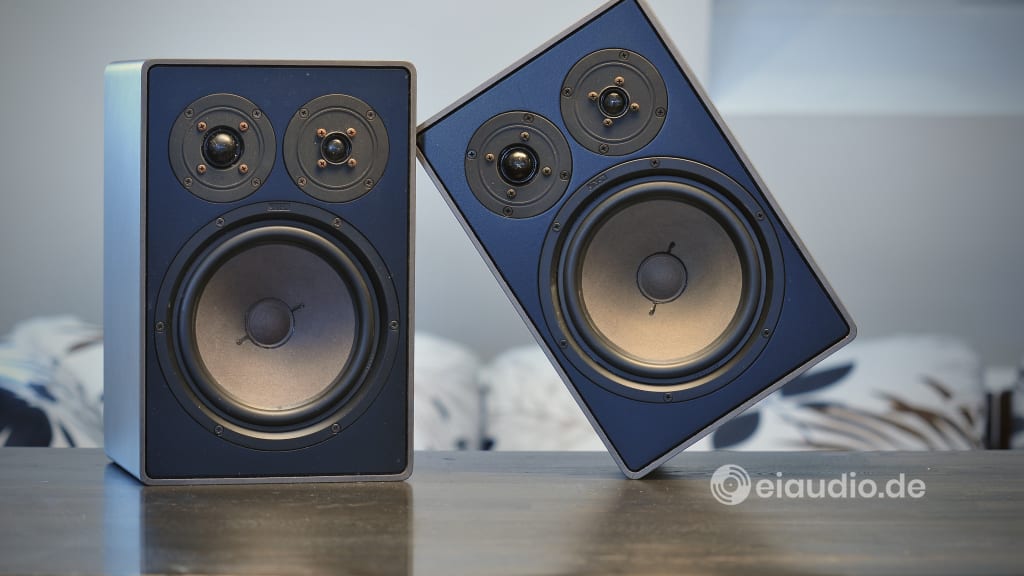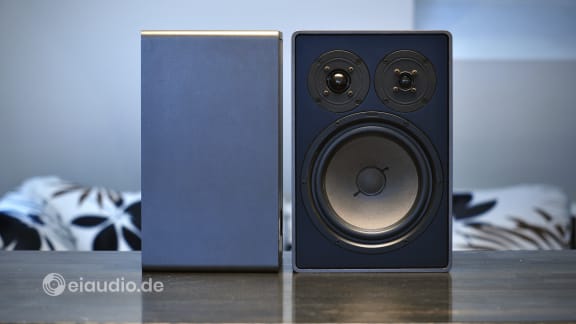Canton GLX 100
Published: 27/03/2023
Manufacturing date: 1983
Author: Karsten Hein
Category: Gear & Review
Tag(s): Loudspeakers
In 2013, not long before our daughter was born, my wife Sabina and I went out to search for a pair of loudspeakers for us to restart our journey in the appreciation of music. When it came to audiophile pleasures, we were both out of practice and felt unsure of what to aim for. Visiting some local HiFi showrooms around Frankfurt, we finally decided that we did not understand enough about loudspeakers to make a permanent decision. However, we did feel some attraction towards Canton speakers that outperformed the competition in terms of clarity. We finally settled on a pair of used Canton Vento 890 DC that we bought from a vendor in Günsburg, Bavaria, unaware that the company was actually located very close to our home in Frankfurt am Main.
Canton was our entry ticket to audiophile listening, even before we fully grasped what this might mean. The 890 DC were revealing speakers that could show the merits and flaws of a system in an instant. They led to us gradually improving our front-end from the music source, via the preamp and amplifier, to the cables connecting the devices, until we noticed a flaw in the Ventos themselves: No matter how hard we tried, we could not get those speakers to sound tonally balanced. The treble, and perhaps also the upper midrange, simply sounded too bright to be natural and did not match the otherwise commendable sophistication of the speakers. Listening to the Ventos could easily become tiring because of this effect and we ended up selling them.
Exactly ten years had passed since our original purchase, and I found myself listening to a pair of Canton speakers once again. Instead of being large floor-standers, however, the GLX 100 were small and inconspicuous bookshelf speakers. They were finished in modest anthracite rather than our Vento’s shiny silver, and the soft fabric dome tweeters made me hopeful that the resulting sound would be less harsh than I had previously experienced with or 890 DCs. And I was sure to give the GLX 100 bookshelf speakers the royal treatment by putting them on our MDF loudspeaker stands and taking good care when positioning them in the room to get the tonal balance right. The GLX 100 had been a gift to my daughter from her great aunt, and I was glad to have the opportunity of auditioning them here first.
As usual, the Cantons opened with a wide soundstage and even gave the impression of proper stage depth when placed a little deeper into the room. Their depiction of female vocals was penetratingly transparent, thus creating an instantly engaging experience that kept the ears at high alert. I also noticed a raspiness in the upper midrange that I had trouble identifying. It could be that there was some competition between the midrange and the tweeter that was causing it. Just to be sure, I removed the front metal grille which, to my ears, made matters worse. These speakers had obviously been designed for the grille to be in place. To achieve greater tonal balance, I moved the GLX 100 closer to the front wall. This gave them improved bass foundation, however, it did not lessen the energy of the treble which proved to be too much for my ears.
I reluctantly turned on the tone controls on our preamplifier and dialled back the treble by 2-3 dB. This was my last resort when speakers were obviously off balance. The silvery and over-accentuated treble subsided and revealed a pretty decent speaker underneath. Without this measure, the GLX 100 were obvious candidates for ear fatigue, if they were driven with a semi-revealing front end. Engineered for the point of sale, the Cantons would have dazzled shoppers in the 1980s and have enjoyed the ride home more often than they deserved. There was no question that Canton knew how to build great speakers for those who had the money and interest in learning about them, but I could easily see that they also knew how to sell speakers to those still new in this territory.
Specifications
- Type: 3-way bookshelf speaker
- Principle: closed, with dynamic drivers
- Frequency range: 28 - 30,000 Hz
- Crossover frequencies: 800 / 5000 Hz
- Low frequency slope: 12 dB per octave
- Midrange slope: 6 dB per octave
- Tweeter: 20 mm, fabric dome tweeter
- Midrange driver: 28 mm, fabric dome tweeter
- Woofer: 220 mm, paper cone
- Nominal impedance: 8 Ohm
- Power handling (RMS): 65 Watt
- Resonant frequency: 69 Hz
- Terminal: spring-secured for 2mm cable
- Number of terminals: single wire
- Dimensions: (W) 245mm x (H) 370mm x (D) 215 mm
- Country of manufacture: Germany
- Weight: 5.5 kg
- Year(s): 1983





